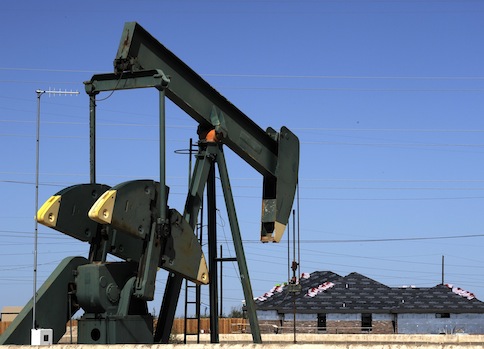The U.S. metro area with the lowest unemployment rate is a shale oil boomtown. The one with the highest unemployment rate houses the world’s largest solar plant.
Energy policy experts are pointing to that dichotomy as evidence that job creation potential in the energy industry lies primarily with fossil fuels, despite the administration’s insistence on creating a "clean energy economy."
According to data released on Friday by the Bureau of Labor Statistics (BLS), Midland, Texas, has a 2.9 percent unemployment rate, the lowest in the country.
Midland sits above the Permian Basin Shale, a massive formation that constitutes a large chunk of Texas’ booming shale oil industry.
The West Texas town is also one of the fastest growing metro areas in the country, which many attribute to its booming oil-fueled economy.
"When people figured out how to [extract oil from shale] through fracking, that was the game changer," former Midland Mayor Wes Perry told Governing.
Fracking, or hydraulic fracturing, is an innovative oil and gas technique that has helped revolutionize the American oil and gas industry. The United States is on track to become the world’s largest producer of oil by 2015, according to current projections.
As a result of Midland’s fracking-induced oil glut, the town’s increasing population is also enjoying a boost in personal incomes. Per capita income in the city increased by 25 percent between 2009 and 2011.
Steve Everley, a spokesman for the industry site Energy in Depth, says Midland is a microcosm of the economic benefits of the nation’s oil and gas boom—facilitated, Everley notes, by recent advances in extraction techniques.
"Midland is an oil town, and it’s essentially the capital of the West Texas oil boom currently going on, thanks to fracking," he said in an email.
Other areas of the country that sit above large shale formations are seeing similar windfalls.
A recent BLS report on oil and gas employment in Pennsylvania attributed a large increase in jobs in that sector "to the recent surge in shale gas production brought about by the drilling in the Marcellus Shale."
"Despite recent declines in Pennsylvania’s overall economy, the state’s oil and natural gas industry has seen substantial growth in terms of both employment and wages," BLS said.
Energy in Depth sees that trend replicating itself across the country.
"Every state with shale development across the nation is outpacing the national average in terms job growth," Energy in Depth spokesman Joe Massaro wrote on Thursday.
In contrast to the successes of those oil and gas boomtowns, Yuma, Ariz., is facing the highest unemployment rate of any U.S. metro area at a whopping 26.1 percent.
Yuma is the site of the Agua Caliente solar plant—the largest photovoltaic solar generation facility in the world.
Agua Caliente received a $967 million loan guarantee from the Department of Energy (DOE) in 2011. According to DOE, federal financing helped create 10 permanent jobs.
The money came by way of the same loan guarantee program that financed the notorious—and now bankrupt—solar company Solyndra.
The project "demonstrates the Administration’s ongoing commitment to creating clean energy jobs while bringing innovative renewable energy technologies to the market," then Energy Secretary Steven Chu said of Agua Caliente when DOE announced its support for the project.
Critics of federal support for green energy projects say Agua Caliente, and the discrepancy between the economies of Yuma and Midland, is indicative of a wholly different trend.
"It represents the difference between an industry which exists of its own accord, by providing goods and services that people actually want to buy, and an industry that exists only by the grace of government, which acts to mandate demand and subsidize supply," said William Yeatman, an energy policy expert with the Competitive Enterprise Institute, in an email.
"It should be intuitive that job creation is more robust around the industry that succeeds on the market due to its own merit, vis-a-vis that which cannot succeed without favorable politics," Yeatman added.
Congressional investigators probed DOE’s support for Agua Caliente in 2012, saying that internal department communications suggested political favoritism and a disregard for potential financial pitfalls.
"The Department of Energy manipulated analysis, ignored objections from career professionals, and strategically modified loan evaluations in order to force project funding out the door" for a number of projects, including Agua Caliente, said Rep. Darrell Issa (R., Calif.), chairman of the House Oversight and Government Reform Committee.
Energy policy experts say federal support for the project provided little economic benefit for the region, as demonstrated by Yuma’s continued struggles with high unemployment.
"The past few years have been a case in point for what works and what doesn’t in energy," Heritage Foundation fellow Nick Loris said in an email.
"Policies that allow the private sector to work will supply Americans with affordable energy, create jobs, and grow our economy," Loris said. "Trying to micromanage the energy sector with handouts, onerous regulations, and mandates will do the opposite, and waste lots of taxpayer money in the process."
